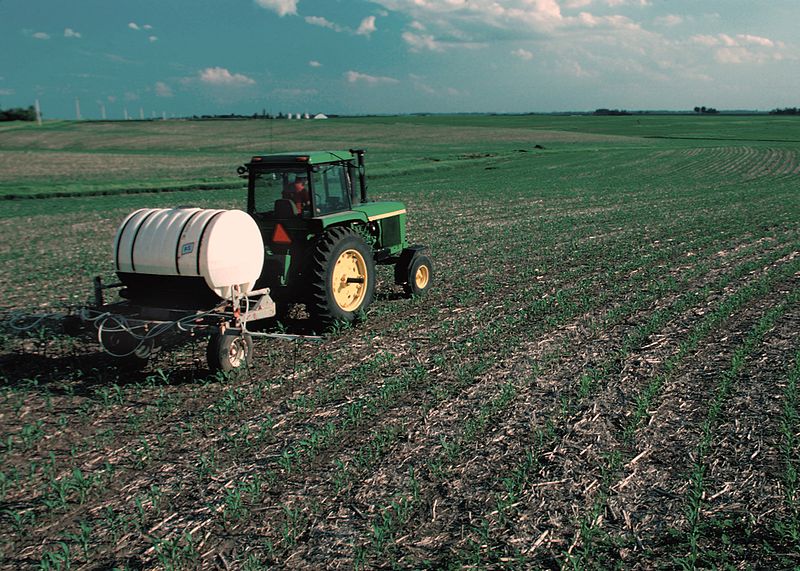What if every MN farm applied fertilizer at the recommended rate?
Minnesota Public Radio’s Elizabeth Dunbar recently covered an administrative hearing on the state’s proposed Groundwater Protection Rule. Her question: Can Minnesota have clean water without regulating fertilizer?
The answer: Even WITH fertilizer regulations, we won’t get to clean water.
Here’s why.
Current fertilizer use
Minnesota’s Nutrient Reduction Strategy looks to reduce nitrogen pollution to our surface waters by 45 percent by 2040. But even “perfect” fertilizer management (by regulation or other means) would, at best, get us just one-third of the way to this goal.
Years of research and farmer surveys provide a clear picture of how Minnesota’s farm operations use fertilizer compared to recommended application rates.
The average percentage of fields that exceed fertilizer recommendations varies by crop rotation:
• Corn-following-corn rotation: 37 percent of fields apply excess fertilizer
• Corn-following-soybean rotation: 65 percent of fields apply excess fertilizer
Overall, the state estimates that Minnesota farm operations over-apply about 100,000 tons of nitrate fertilizer a year[i], at least 10-15 percent more nitrogen fertilizer than recommended to optimize crop yields each year.
Environmental impacts
Excess fertilizer impacts drinking water and surface waters:
• 537 public water supply wells across the state have elevated nitrate levels
• Nearly 10 percent of private wells in geologically vulnerable areas (including places with sandy soil) are already above the health risk limit of 10 mg/L
• Nitrate concentrations in the metro Mississippi River have increased 44 percent since 1976
• Approximately 27 percent of Minnesota streams exceed the state’s drinking water health risk limit for nitrate (10 mg/l), and more than 40 percent exceed 5 mg/l.
While farm operations could secure perhaps a 10-15 percent reduction in nitrate pollution (and save money) simply by following recommended rates, that would nevertheless amount to only one-third of the total pollution reduction needed.
Why? Because Minnesota's fertilizer recommendations are designed to maximize profit, not prevent water pollution.
The shortcomings of fertilizer recommendations: Profits vs. Clean Water
Modern fertilizer recommendations are not based on environmental protection. They're designed to maximize profits.
Fertilizer rates are set to achieve “Maximum Return To Nitrogen” (MRTN) – the level that maximizes profit for the farm. The rate recommendations can change with crop prices and fertilizer prices – but usually stay within a narrow range based on the state’s agricultural regions and soil types.
Profit-based fertilizer recommendations anticipate nitrate leaching from the soil into our waters and direct farmers to over-apply by enough that such nitrate losses do not deprive plants of full growth.
- For example, the University of Minnesota Extension's “Best Management Practices for Nitrogen Use in South-Central Minnesota," determine MRTN to be 120 pounds per acre, spring applied.[ii] Table 2 of that same document concludes that following this recommendation would yield nitrate loss at concentrations of 13.7 mg/l — well above the state’s health risk limit.
Why? It’s a complicated answer, but the short version is that nitrate is soluble and “goes where the water goes.” Cropland is leaky, it doesn't hold its water (in some cases by design, with drain tile systems in place to flush water out of the soil). Water leaching from fields will naturally carry nitrate with it. As a result, even if everyone applied fertilizer at the recommended rate, nitrate pollution would remain a major problem.
The state has acknowledged tthat these profit-based recommendations are insufficient to meet the goals of the state's Nutrient Reduction Strategy and Groundwater Protection Act,[iii] and were never intended to prevent drinking water contamination.[iv]
Climate change strikes again
Stop me if you’ve heard this before, but climate change is only going to make things worse.
Research shows that changes in precipitation patterns alone will increase the amount of nitrate being delivered to surface waters by an average of 19 percent nationally and as much as 24 percent in the corn belt through this century.[v]
Conclusion
Improving fertilizer use efficiency is a critically important piece of the clean water puzzle, and Minnesota has a long way to go in reducing 100,000 tons/year in excess applications. Perhaps stronger rules can help.
However, simple math makes it clear: Minnesota cannot and will not achieve our 45 percent pollution reduction goal by relying solely on improved fertilizer management. And failure to address the impacts of climate change will erase any gains made anyway.
So, can Minnesota have clean water without regulating fertilizer?
Perhaps, but only by transitioning from our leaky annual crops (like corn and soybeans) to a more diverse crop rotation that includes cover and perennial crops that help protect our water.
[i] Minnesota Department of Agriculture. 2018. Statement of Need and Reasonableness in the Matter of Proposed Permanent Rules relating to Groundwater Protection. Page 51.
[ii] ”Greatest yield and profit with a minimal increase in NO3-N concentration was found with the spring-applied 120-lb N rate.”
[iii] Minnesota Department of Agriculture. 2015. Nutrient Fertilizer Management Plan. Page 57.
[iv] Minnesota Department of Agriculture. 2015. Nutrient Fertilizer Management Plan. Page 41.
[v] Sinha, E, A.M. Michalak, V. Balaji. Eutrophication will increase during the 21st century as a result of precipitation changes. Science, July 28, 2017, 405-08.
